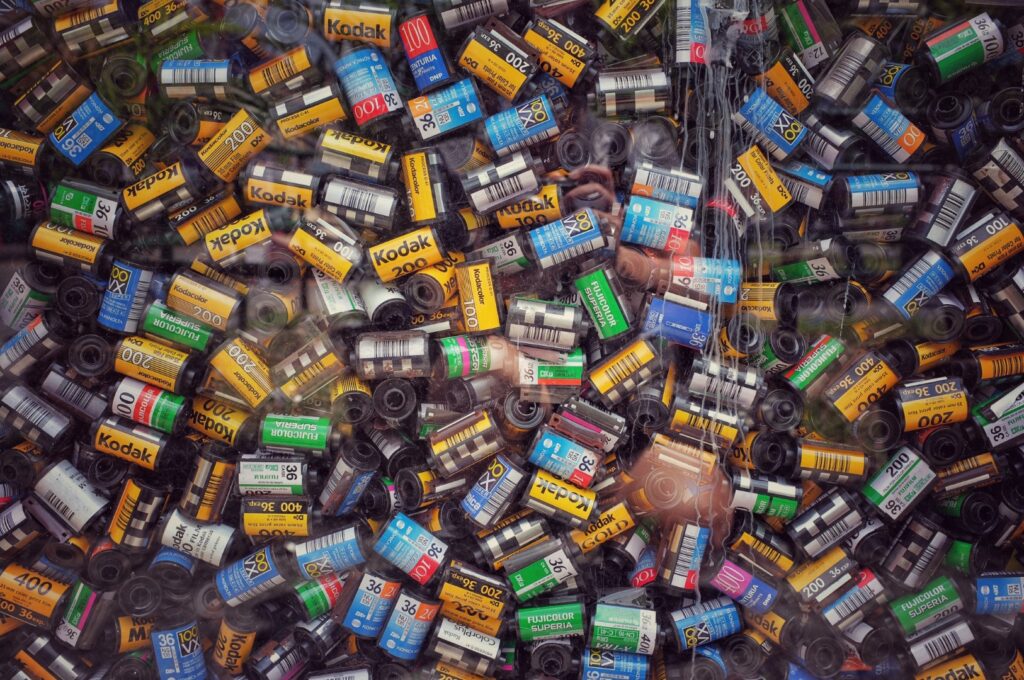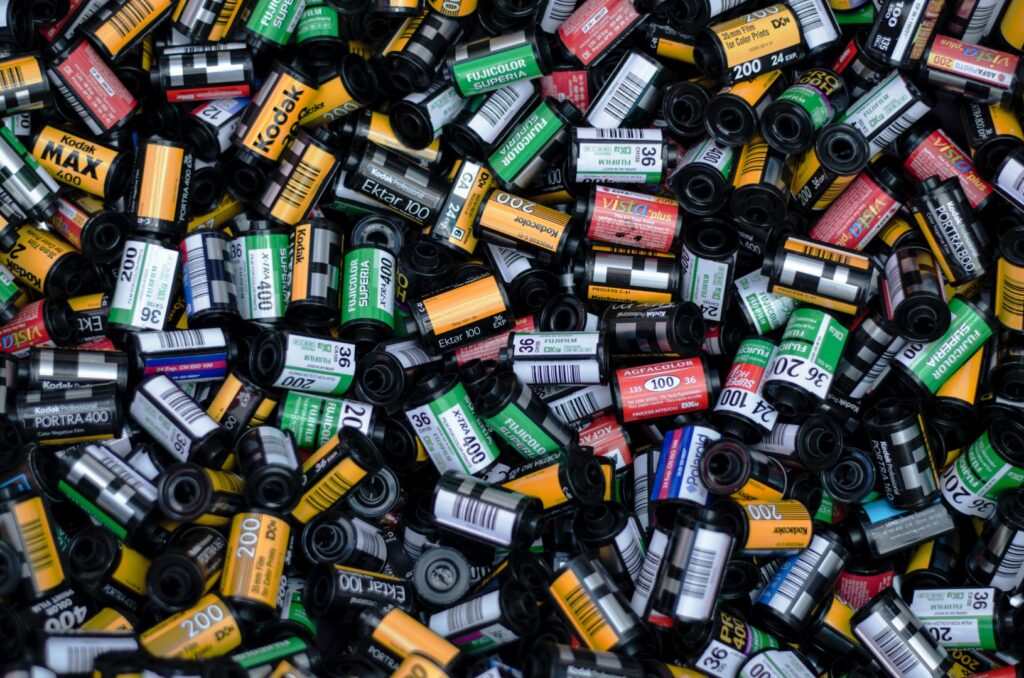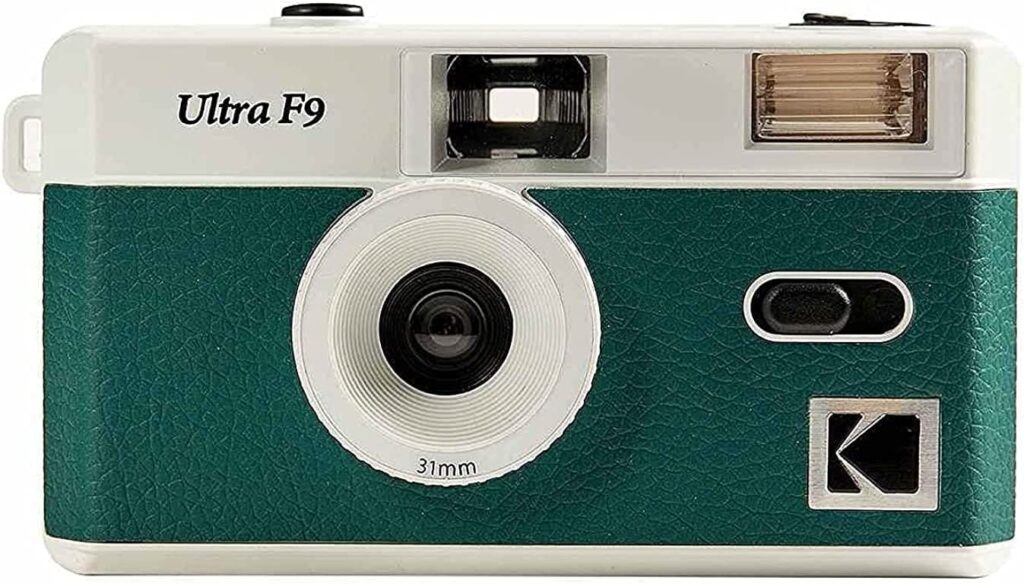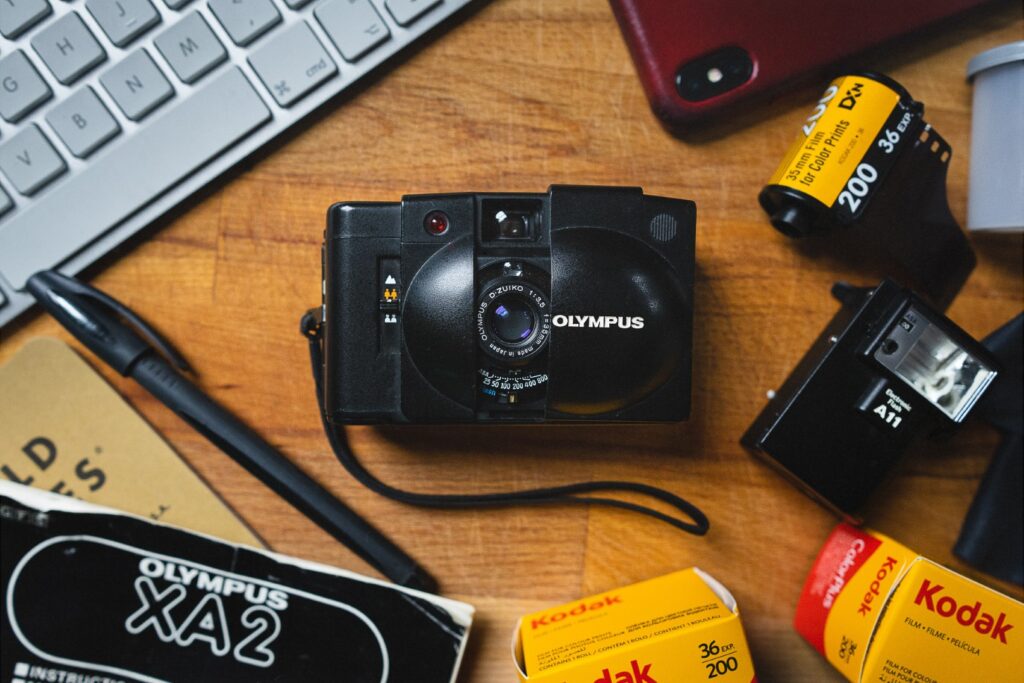In the realm of film photography, a key characteristic photographers consider is the film speed, determined by its ISO rating. When capturing images in lower light or aiming for a specific aesthetic, photographers often reach for ‘fast’ films – those with a high ISO rating, promising better performance in these situations. In this article, we will embark on an exploration of the fastest 35mm films available today. We’ll uncover which film speed is the fastest, compare the top offerings from photography powerhouses like Kodak and Fuji, and analyze the fastest color, black and white, and slide films currently on the market. We’ll also delve into the intriguing world of film manufacturing and marketing, taking a close look at some of the discrepancies between advertised and true film speeds. If you’re eager to push the boundaries of film speed or just curious about these high-speed emulsions, read on as we illuminate this swift sector of film photography, and if you are not only looking for the fastest 35mm films but want to gain a broader overview, make sure to check out our article on all currently available 35mm films.
What Film Speed is the Fastest?
Film speed is a critical concept in photography, measured via an ISO rating which denotes a film’s sensitivity to light. ‘Fast’ films, those with a higher ISO number, are adept at capturing images in low-light conditions, and the current title holder for the fastest readily available 35mm film is the Kodak TMax 3200 B&W.
While this film is labeled as ISO 3200, its true speed is somewhere around ISO 800-1000. Nevertheless, it’s expertly designed to be ‘pushed’ during processing, effectively delivering results at its marketed speed, or even beyond.
The TMax 3200’s unique blend of speed and flexibility allows it to thrive in low-light situations and during high-action scenarios. These are conditions where slower films often falter. However, it’s important to remember the trade-off involved; fast films like TMax 3200 tend to produce more visible grain, resulting in a unique, grittier aesthetic. If you are interested you can check the current prices here.
Another noteworthy high-speed film is the Ilford Delta 3200 Professional. It’s marketed as an ISO 3200 film, but it’s closer to ISO 1000-1200 in true speed. However, it can be successfully ‘pushed’ to 3200, or even higher, during processing, lending it a similar flexibility to TMax 3200.
While both TMax 3200 and Delta 3200 stand as the fastest films you can readily get your hands on, it’s crucial to understand that a higher ISO doesn’t necessarily mean ‘better.’ Choosing the right film is about matching your shooting conditions with the aesthetic you’re aiming for. Both these films offer speed and flexibility, but they also carry a distinct, grainy look that may or may not align with your creative vision.
What is the fastest Fuji Film available?
the realm of Fuji films, their fastest current offerings available in 35mm format peak at an ISO of 400. Two notable options stand out: FUJICOLOR PRO 400H and FUJICOLOR SUPERIA X-TRA400.
The FUJICOLOR PRO 400H is a professional-grade color negative film favored by many photographers for its exceptional color reproduction. It’s particularly renowned for its ability to render skin tones beautifully and provide fine grain quality even at its relatively high speed. With an ISO of 400, it’s versatile for a variety of lighting conditions, and while not a ‘fast’ film by the traditional definition, it delivers exceptional performance for most general photography scenarios.
On the consumer front, the FUJICOLOR SUPERIA X-TRA400 is a popular choice. This color negative film provides high image quality and remarkable sharpness. Its ISO 400 speed makes it adaptable and reliable for various shooting situations, from sunny outdoor scenes to indoor settings with flash.
Notably, Fuji had previously offered a faster film, the Natura 1600, favored for its impressive performance in low-light conditions. However, in 2017, this film was discontinued and is no longer readily available in the market. Its loss is felt by many in the photography community who enjoyed the distinctive aesthetic that this high-speed film provided. While Fuji’s current fastest 35mm films may not compete with the high-speed offerings of some other manufacturers, they consistently deliver high-quality results and maintain a loyal following of photographers who value their unique characteristics.
What is the Fastest Kodak Film Available?
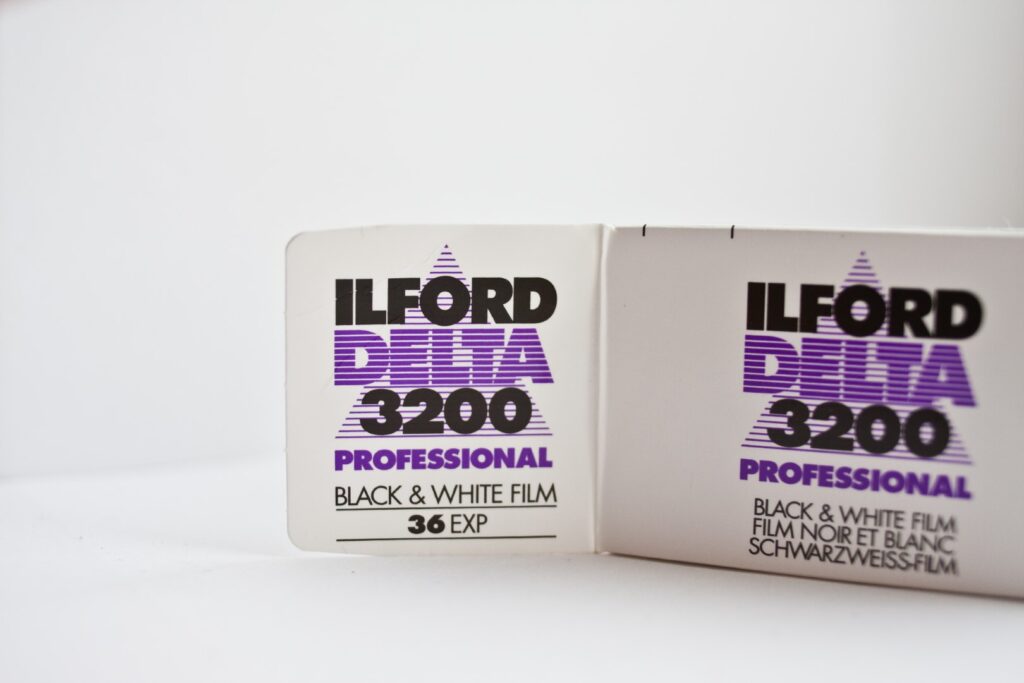
When it comes to high-speed film, Kodak’s fastest offering in the 35mm format is the highly respected TMax 3200 B&W. As its name suggests, this black and white film is marketed with an ISO rating of 3200, making it a standout choice for those shooting in challenging lighting conditions.
While its true film speed is closer to ISO 800-1000, TMax 3200 is designed to be ‘pushed’ in the processing stage to effectively deliver results at its marketed speed. This feature offers a great deal of flexibility for photographers, enabling them to achieve well-exposed shots even in low-light or fast-action scenarios where slower films might struggle.
One distinctive characteristic of TMax 3200 is its grain structure. High-speed films typically produce more visible grain, and TMax 3200 is no exception. However, Kodak has developed an advanced technology known as T-Grain emulsion, which results in a finer grain structure than that of many other fast films. This allows TMax 3200 to deliver comparatively smoother, more detailed images.
TMax 3200 has garnered positive reviews from photographers worldwide. Its versatility, coupled with the unique aesthetic provided by its grain structure, has made it a beloved option for both professional photographers and enthusiastic amateurs. It’s particularly appreciated for its performance in street photography, concert photography, and other settings where light is unpredictable or limited.
In short, Kodak’s TMax 3200 is not only the fastest film from Kodak but also the one of the fastest commercially available 35mm films you can find today. Its unique blend of speed, versatility, and aesthetic appeal makes it a compelling choice for those seeking to push the boundaries of film speed.
What is the Fastest Color Film Available?
Leading the pack are Kodak Portra 800, CineStill 800T, and Lomography Color Negative 800, each boasting an ISO rating of 800.
Kodak Portra 800, a member of the esteemed Portra line, is a professional-grade color negative film celebrated for its exceptional skin tone reproduction and fine grain. Its elevated speed makes it a standout performer in action shots and low-light scenarios, all while preserving exquisite color fidelity.
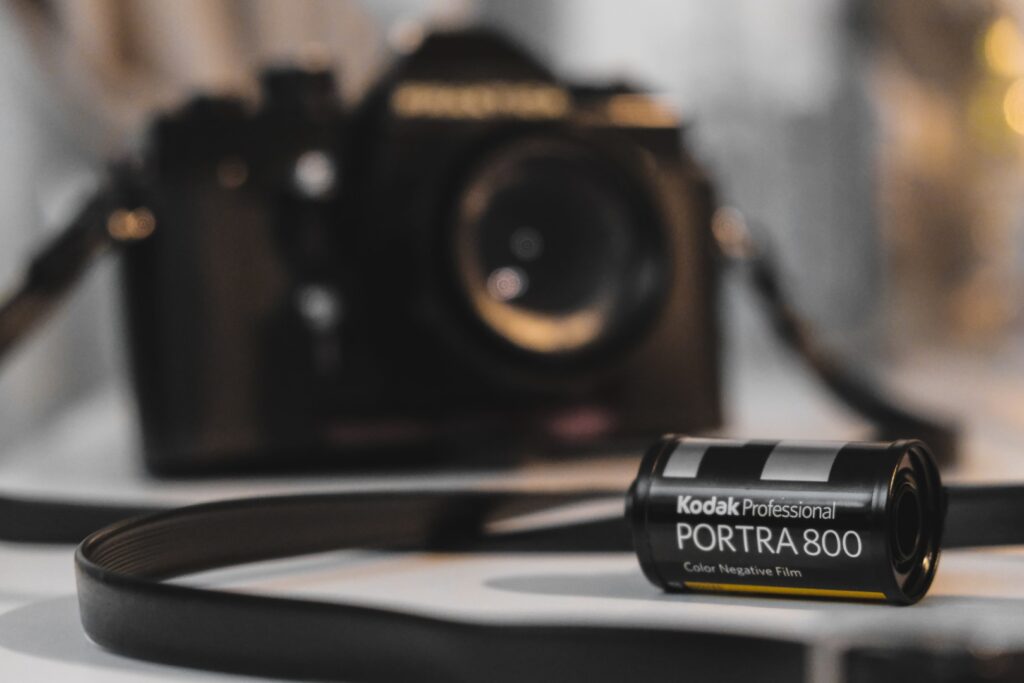
In contrast, CineStill 800T offers a unique cinematic aesthetic. Originally intended as motion picture film stock, it has been repurposed for still photography, presenting a distinct visual experience. The ‘T’ in its name stands for Tungsten, indicating its balance for tungsten lighting, making it an exceptional choice for night cityscapes and indoor photography under artificial illumination.
Adding another facet to the high-speed color film spectrum is the Lomography Color Negative 800. Known for its vibrant colors and pronounced grain, this film offers a lomographic charm that’s loved by many creative photographers. Despite its high ISO, it provides pleasing saturation and contrast, making it a versatile choice for various lighting conditions.
These three films offer high speed without sacrificing the vibrancy and depth of color, making them excellent options for photographers seeking both versatility and quality in challenging light conditions. Each film has its unique characteristics, providing a variety of aesthetics for photographers to choose from based on their creative vision.
What is the Fastest Black and White Film Available?
When it comes to the fastest black and white films available in 35mm format, Kodak TMax 3200 B&W and Ilford Delta 3200 Professional take center stage.
The Kodak TMax 3200 B&W, while marketed as an ISO 3200 film, actually has a true speed closer to ISO 800-1000. However, its sophisticated design allows it to be ‘pushed’ during processing to deliver effective results at the higher advertised speed. Known for its advanced T-Grain emulsion technology, TMax 3200 produces fine grain images that retain a commendable level of detail. Despite its high speed, the images yield a comparatively smoother quality, an attribute often absent in fast films. This film truly shines in low-light and fast-action scenarios, making it a popular choice among street and concert photographers.
Parallelly, the Ilford Delta 3200 Professional is another prominent high-speed black and white film. Marketed as an ISO 3200 film, its true speed hovers around ISO 1000-1200. But like the TMax, it can be successfully ‘pushed’ to 3200 or even higher during processing. Delta 3200 is esteemed for its fine grain and high contrast, securing its place in the hearts of black and white photographers.

Whether it’s Kodak TMax 3200 or Ilford Delta 3200, both these films showcase the incredible potential of high-speed black and white photography. The choice between them boils down to individual preference, shooting conditions, and desired aesthetic outcome.
Conclusion
This article has provided an overview of some of the fastest 35mm films currently available in the market. We’ve examined a variety of options, both in black and white (like Kodak TMax 3200 and Ilford Delta 3200 Professional) and in color (including Kodak Portra 800, CineStill 800T, and Lomography Color Negative 800).
These films each possess unique characteristics, making it clear that the world of high-speed films offers a wide range of aesthetics. While their speed ensures their performance in challenging light conditions, it’s their individual features that will decide how well they align with your specific needs and creative vision.
However, the films discussed in this article are just a fraction of the many options available to photographers today. If you’re interested in learning more about all the 35mm film options out there, check out our complete list of all currently available 35mm films.
The crucial thing to remember is that the technical specifications of a film are only one aspect to consider. Finding a film that matches your creative goals is equally, if not more, important. So, don’t hesitate to explore and experiment until you discover the perfect film for your photography style and needs.

